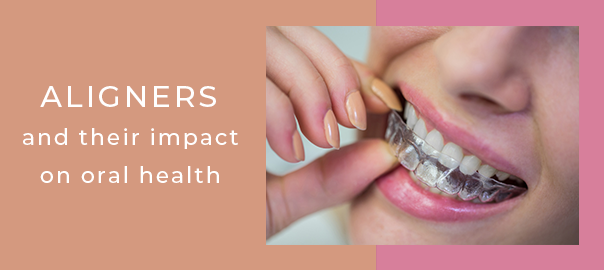
Aligners and Dental Hygiene – How to maintain dental hygiene with Aligners?
The invention of Aligners marks a new era of orthodontic treatment. They are the perfect choice for individuals who avoid braces but still need an orthodontic correction because they do not like the appearance of traditional braces.
Alongside their effective role in straightening misaligned teeth, aligners also help make oral health maintenance easier than braces. In this blog post, we discuss the importance of superior oral health maintenance provided by aligners and the relationship between aligners and oral hygiene.
The Importance of Aligners in Orthodontic Treatment
Malocclusions or crooked teeth—these issues not only spoil a smile’s beauty but also create serious functional difficulties. Clear aligners became popular for correcting functionality without compromising aesthetics. In contrast to metal braces, aligners are transparent and removable, meaning they are both discreet and comfortable for any age group.
Enhanced Dental Hygiene with Aligners
One of the many significant benefits of clear aligners is their removability feature, which grants individuals unimpeded access to their teeth during the treatment process. Compared to standard braces, cleaning may be a major concern because the wires and brackets can accumulate food particles, which consequently leads to plaque buildup and a risk of cavities. While aligners can be easily detached for standard oral care routines, this is not the case with metal braces.
Easy Cleaning Routine
The wearers of aligners have an easy cleaning routine because they are able to brush and floss their teeth without any obstructions. With traditional braces one requires special tools such as floss threader, interdental brushes etc. in order to clear plaque around wires and brackets. Aligners, being removable, make oral hygiene routine simpler and faster.
Reduced Risk of Gum Disease and Cavities
The increased ability of aligners’ users to keep their gums healthy results in a lower frequency of gum disease and cavities; due to the ease of tooth brushing and flossing, people get a chance to remove plaque and bacteria, therefore preventing common dental problems that may develop during orthodontic treatment.
Regular Dental Check-ups and Cleanings
Orthodontic Check-ups, Dental Cleaning, and Aligner Hygiene are important for maintaining dental health. Regular visits to your dentist, even when using aligners, are also important. Orthodontists play a crucial role in monitoring the progress of orthodontic treatments, identifying any arising matters, and rendering professional cleanings to guarantee optimal oral health.
Role of Dental Hygiene in the Success of Orthodontic Treatment
Oral hygiene practices are more than just preventing cavities and gum disease – they are key to the success of orthodontic treatment. Poor oral hygiene can cause serious problems like decalcification (white spots) on the teeth or an extended period of treatment. Observing a proper oral hygiene regime makes sure that patients get the most out of their clear aligner treatment.
Conclusion
In conclusion, clear aligners represent a significant advancement in orthodontic care. They provide a highly aesthetic solution for achieving a straight smile while benefiting overall dental health. Taking off aligners for cleansing guarantees that patients observe proper oral care, reducing their exposure to common dental issues. As we journey towards having an aligned and healthier smile, lets not underestimate the role of dental hygiene in maximizing the benefits of aligner treatment.
Leave a Reply
Leave a Reply
Explore More Similar Posts
Explore More Blogs


Leave a Reply